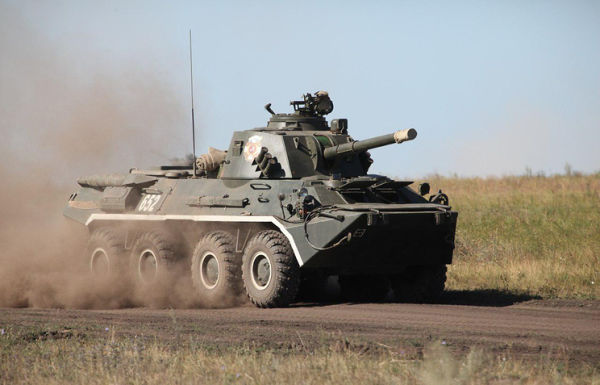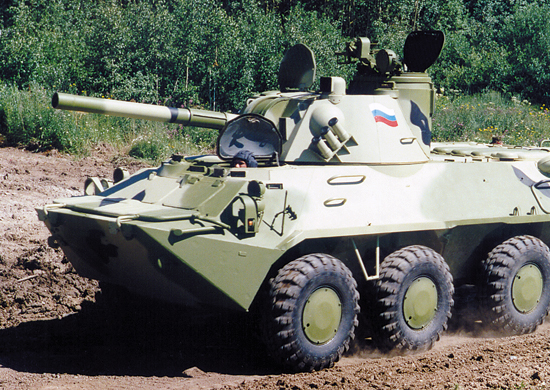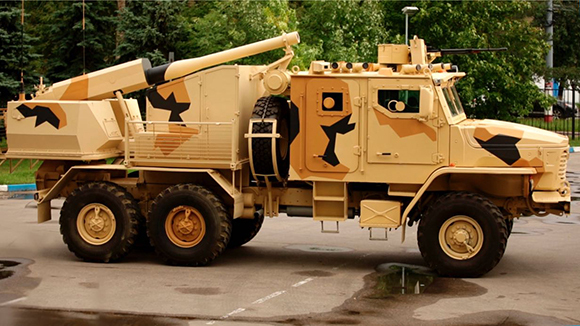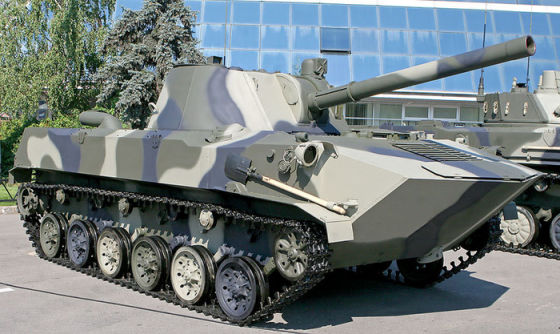In April, the Ministry of Defense published footage of combat work in the zone of a special military operation (SVO) of artillery units of Airborne troops using "Nonu" - a self—propelled artillery gun (CAO), effective in a variety of combat conditions, to destroy nationalists. Read more about the "Non" and the most notable novelties in this type of weapons — in the material of TASSIn the fields of ITS
The footage, published on the official website of the Ministry of Defense of Russia, shows the work of one of the artillery units of the Kostroma paratroopers in the SVO zone. Their tasks include the destruction of command and observation posts and enemy manpower entrenched in the forest.
Combat crews with unmanned aerial vehicles (UAVs) are responsible for detecting the positions of the APU. After the quadcopter has spotted the target, the paratroopers begin their work.
"Calculations of self-propelled guns "Nona" make a march to firing positions, carry out aiming and inflict fire damage to the Armed Forces of the Armed Forces, also destroying enemy command and observation posts equipped in the forest. After the destruction of targets, the crews of self—propelled artillery installations promptly change their position, excluding falling under return fire," the Ministry of Defense said in a statement.
According to military expert, director of the Museum of Air Defense Forces Yuri Knutov, artillery on a self-propelled chassis allows you to perform tasks as quickly and efficiently as possible. "At the same time, both types are important — wheeled and tracked. The first is good in the dry season for high—speed movement on the highway, the second during the thaw, when you need to go off-road, " Knutov said in an interview with TASS.
The birth of "Nona"
According to military experts, one of the main advantages of self—propelled artillery guns is efficiency and mobility. It was these requirements that were taken into account first of all in the 1960s when creating a special combat vehicle for the needs of Airborne troops. Another important condition for the designers was the possibility of landing, since the installation was supposed to be used, including on enemy territory (in those years, in the event of a global conflict with NATO, the airborne forces had to capture key objects behind enemy lines). The development of weapons was carried out under the personal supervision of the creator and the first commander-in-chief of the Airborne Forces Vasily Margelov.
The first ACS for the "blue berets" was named "Violet". A powerful 122-mm gun was installed on the platform of the amphibious assault vehicle (BMD-1), but during the tests it turned out that its chassis could not cope with the load.
In the mid-1970s, the designers of the Central Research Institute of Precision Engineering, in cooperation with engineers of the Perm Motovilikha (a legendary weapons company founded in 1736), developed a 120-mm rifled gun 2A51, which was mounted on a tracked armored personnel carrier BTR-D. Due to the chassis lengthened by one roller, the combat vehicle became more load-lifting, and the new gun could fire several types of projectiles. The car was assigned the index 2C9 "Nona-C" (according to one version, the name can be deciphered as "A new ground artillery gun").
 |
| Self-propelled artillery installation "Nona-SVK". |
| Source: © CVO Press Service |
According to open sources, "Nona-S" met all the requirements of a weapon for "winged infantry": it could destroy defensive fortifications, destroy enemy manpower and tanks.
Universal tool
According to experts, the uniqueness of the "Nona" is that it can replace several types of weapons on the battlefield at once.
"Nona" still has no analogues in the world. After several stages of upgrades, this is a mortar, a cannon and a howitzer in one person. The maximum firing range of a high-explosive shell is almost 9 km. At the same time, the Nona gun allows you to use any foreign 120-mm ammunition without any design changes, for example, APCM from the French RT-61 rifled mortar, with a firing range of up to 17 km," Yuri Knutov notes.
Also, the ammunition of a self-propelled artillery installation can include active-rocket projectiles with an engine that allows you to hit targets at a range of up to 13 km, as well as corrected Kitolov-2 rockets. They can be aimed at the target with a laser, hitting the enemy's heavy equipment, like a harpoon, from above into the most unprotected part.
In addition, in the rich arsenal of "Nona" there are conventional cumulative shells capable of piercing up to 600 mm of armor, as well as all types of mines for smoothbore and rifled mortars.
 |
| CAO "Nona-SVK". |
| Source: Ministry of Defense of the Russian Federation |
The design of the self-propelled gun with the use of a special aluminum alloy allows it not only to land from an airplane, but also to force water obstacles. The wheeled version of the "Nona-SVK" based on the BTR-80 with a 260 hp engine is capable of accelerating in a straight line up to 80 km/h.
Along with the Nona, the Hosta self—propelled artillery unit (CAO 2C34) is taking part in a special military operation - the result of a deep modernization of the Gvozdika, Vena and Nona-SVK self-propelled guns. "Hosta" is designed to suppress manpower, artillery and mortar batteries, rocket launchers, armored targets, firepower and control points at a distance of up to 14 km. The main weapon of the "Hosts" is a 120 mm 2A80—1 cannon and a 7.62mm PKT machine gun.
Continuation of the self-propelled theme
In 2016, at the international exhibition "Army 2016", the Central Research Institute "Burevestnik" (part of the Uralvagonzavod Corporation) presented the latest self-propelled gun "Phlox", which has become a worthy continuation of the line of Russian self-propelled artillery installations.
As previously reported by TASS, the transport base of the 120-mm self—propelled artillery gun "Phlox" is an army armored car "Ural-4320" with a 6x6 wheel formula. This is not only the first complex capable of hitting highly protected targets both at a distance of tens of kilometers and literally a few meters away, but also a mobile combat system that is practically invulnerable to the enemy.
"The main feature of the new CAO is a combined semi—automatic rifled gun, which provides firing with all types of mortar mines and shells with ready-made rifling. The peculiarity of this gun is its versatility — it can be used not only as a howitzer, mortar, but also successfully shoot direct fire. Accuracy of shooting is provided by a special drive that restores the tip after each shot," Georgy Zakamennykh, Director General of the Burevestnik Central Research Institute, noted in an interview with TASS. Also, according to him, for the first time in domestic practice, an artillery installation received a system for detecting laser irradiation and optical interference to protect against guided projectiles and anti-tank guided missiles.
 |
| Wheeled self-propelled gun "Phlox". |
| Source: uvz.ru |
As an additional weapon of the Phlox, a remote-controlled 7.62 mm machine gun module is used, placed on the roof of the cabin.
In the summer of 2022, it became known that Uralvagonzavod Concern (UVZ, part of Rostec State Corporation) He began mass production of the Phlox and the Magnolia self-propelled artillery gun on the chassis of the armored two-link tracked transporter DT-30PM.
Another novelty has been created to support airborne assault groups of Airborne troops. The armored car based on the Typhoon-Airborne vehicle from the Remdiesel enterprise (part of Rostec) was named "Drok". Its main armament is an 82 mm mortar with manual loading. The crew of the vehicle can fire at targets without leaving the combat compartment, both with regular and with the latest mines with increased power and range.
Among the foreign analogues of Russian self-propelled guns, experts primarily single out the 120 mm Finnish Nemo mortar and the Spanish Alakran. Both vehicles are made according to the standard scheme (armored chassis + uninhabited turret), do not have a high rate of fire and range (about 6 rounds per minute at a distance not exceeding 10 km) and cannot boast of optoelectronic countermeasures. However, the most important thing, as Yuri Knutov says, is that none of the foreign classmates of our ACS is capable of using such a diverse ammunition.
Prepared by Vasily Kuchushev

